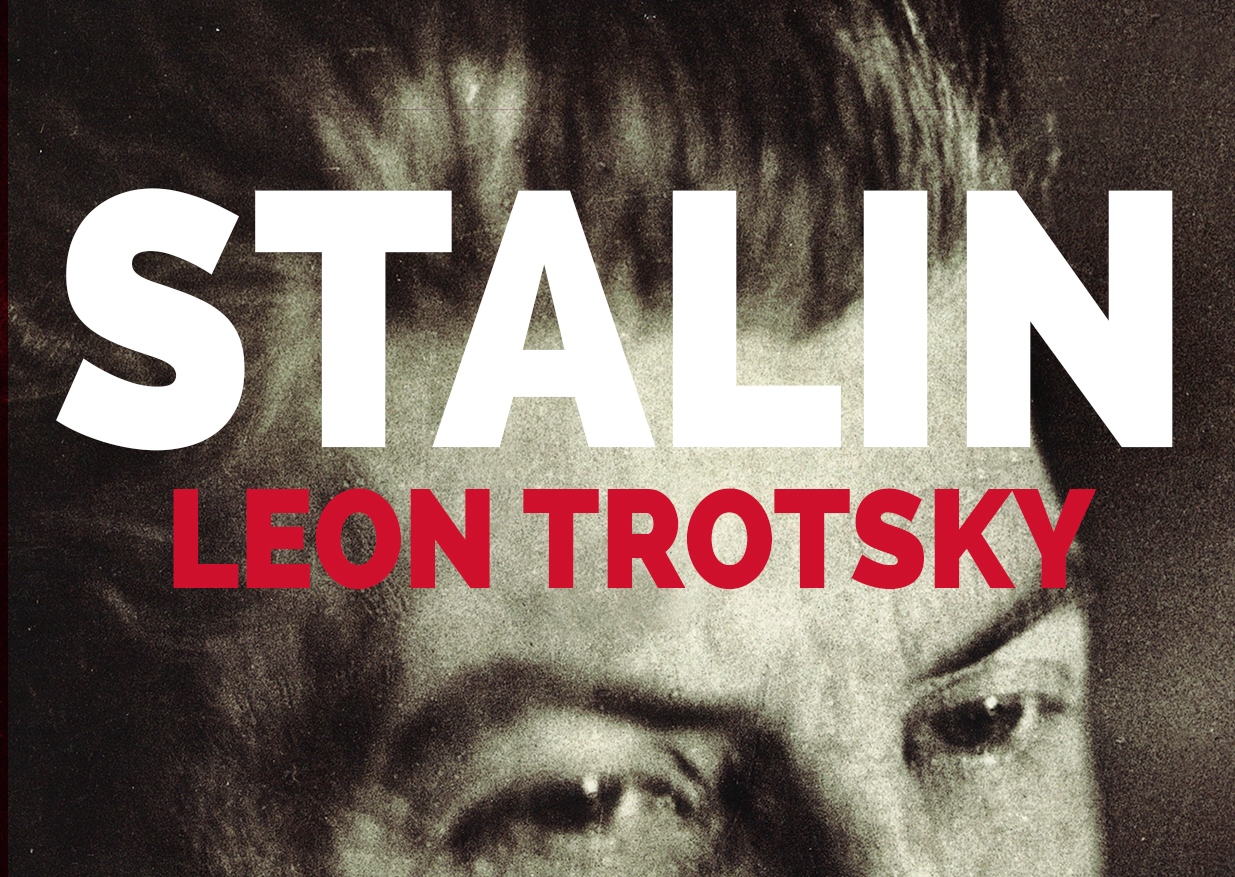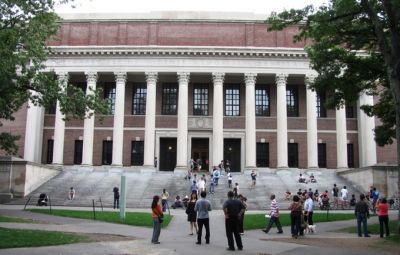Wellred Books proudly presents a work eighty years in the making. Leon Trotsky's unfinished biography of Stalin, the most extensive ever edition of the book completed from the original archive material. Here is the story behind the book.
Introduction by WellRed Books
On 20th August 1940 Trotsky’s life was brutally ended when a Stalinist agent brought an ice pick crashing down on his head. Among the works left unfinished was the second part of his biography of Stalin.
Trotsky’s Stalin is unique in Marxist literature in that it attempts to explain some of the most decisive events of the 20th century, not just in terms of epoch-making economic and social transformations, but in the individual psychology of one of the protagonists in a great historical drama. It is a fascinating study of the way in which the peculiar character of an individual, his personal traits and psychology, interacts with great events.
How did it come about that Stalin, who began his political life as a revolutionary and a Bolshevik, ended as a tyrant and a monster? Was this something pre-ordained by genetic factors or childhood upbringing? Drawing on a mass of carefully assembled material from his personal archives and many other sources, Trotsky provides the answer to these questions.
In the present edition we have brought together all the material that was available from the Trotsky archives in English and supplemented it with additional material translated from Russian. It is the most complete version of the book that has ever been published. On the eve of the centenary of the October Revolution, we believe that Trotsky’s Stalin is relevant and inspiring as never before.
Please support our kickstarter campaign to publish the book here
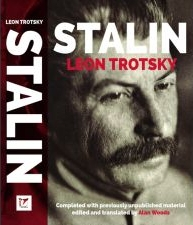 Trotsky’s Stalin was commissioned by the New York publisher Harper Brothers in February 1938 and was first published in English in 1946. Stalin was Trotsky’s last major work. However, his life was cut short by a Stalinist assassin on 20th August 1940. The book was never finished.
Trotsky’s Stalin was commissioned by the New York publisher Harper Brothers in February 1938 and was first published in English in 1946. Stalin was Trotsky’s last major work. However, his life was cut short by a Stalinist assassin on 20th August 1940. The book was never finished.
While Trotsky worked on the book, the manuscript was being translated into English by Charles Malamuth. Following his assassination, the unfinished manuscripts were handed over to Malamuth, not simply for translation, but in fact to edit the work for publication.
Whatever Malamuth’s talents, this was a political task for which he was completely unsuited. When the book was finally published, the new “edited” version contained large chunks of material inserted by the editor, which were clearly in violation of Trotsky’s political thought. Despite indignant protests from Trotsky’s widow, Natalia Sedova, the offending material was retained by the publishers.
The prime reason for the republication of this newly-expanded edition of Trotsky’s Stalin is to put right this violation and to insert the material that was excluded by the editor. This project to republish Trotsky’s original Stalin in this updated form has been more than a decade in the making. The volume removes Malamuth’s political insertions, which amounted to more than ten thousand words, and restores the original manuscript from unpublished material deposited in the Trotsky archives at Harvard University.
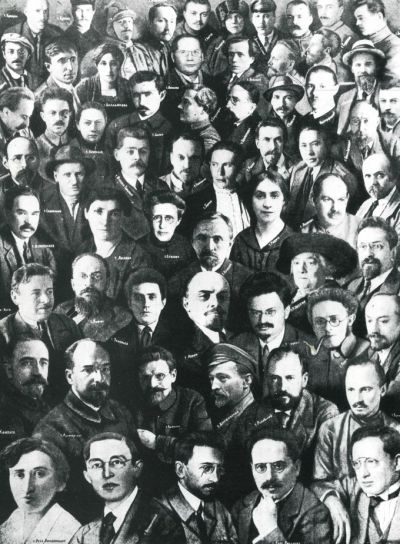 Contemporary montage of Bolshevik leaders of the revolution. Note Stalin is not included. Courtesy of David King
Contemporary montage of Bolshevik leaders of the revolution. Note Stalin is not included. Courtesy of David King
This new edition is the most complete ever published in any language, including in English or Russian, and has increased the size compared to the original over thirty percent. It represents the most extensive work ever undertaken to “rebuild” the book, and comprises nearly a hundred thousand more words than the original 1946 edition. Malamuth explained that he had left alone the first seven chapters, “except for a few deletions of repetitious material.”
We have taken the liberty of restoring this material as best we can. Rather than follow Malamuth’s arrangement, we have chosen our own, following the chronology of events. The editing of this material to ensure the maximum continuity was carried out by Alan Woods, who also translated the bulk of the Russian material.
The Trotsky archives
In 2003, while on a political trip to the United States, I visited Boston and took advantage to visit the Trotsky archives at the nearby university. Trotsky had agreed that the material would be dispatched to Harvard for safe keeping. “The archives are leaving [for the United States] this morning on the train”, wrote Trotsky on 17th July 1940, a little over a month before his assassination. (Writings supplement 1934-40, p.863)
I was astonished by the vast amount of material contained in the archive. My attention was drawn to the material about Trotsky’s last book - Stalin. To my amazement I discovered that there were nine large manuscript boxes in the archive, the Harper Manuscripts (items H1 – H28), containing the all the preparatory materials for the Stalin book. These contained all the original files, the drafts, proof galleys, press cuttings and notes, handwritten and in typed form, as well as a number of boxes containing all of Charles Malamuth’s English translations of Trotsky’s Russian originals.
The first thing that strikes you about the Stalin collection are the different layers, built up like geological strata, which were eventually used to produce the first half of the book, that is to say, up to and including 1917. These first drafts contained hand-written and typed texts, the second drafts that were completely typed, translated and then passed back to Trotsky for further correction, editing and polishing. Trotsky certainly took a great deal of pride in “polishing” his writings as well as seeking to improve upon the English translations, so that the meaning could be as precise as possible.
My first visit to Harvard simply identified what was there. On subsequent visits, I asked to see the entire archive on Stalin, which was delivered to the reading room on a large trolley. The files containing the materials are housed in large archive boxes and numbered in separate folders (bsmRuss 13.3) H1 – H28. These also contain all the paper clippings and various materials that were translated into English but not used in the final edition of the book, including the original drafts, held in folders H14 – H19.
Charles Malamuth
The first part of Stalin deals in a masterly fashion with the role of the individual in history, tracing the evolution of Stalin from a young boy in the Seminary to a professional revolutionary in the years before the Revolution of 1917. However, the incomplete second part, which, even in the mutilated published edition, contains extremely interesting material, was marred by the additions introduced by Charles Malamuth. This was not simply bridging material as he maintained, but was made up of whole chunks of text in certain chapters, which clearly contradicted the political line of the book.
When Trotsky’s widow, Natalia Sedova and Trotsky’s attorney, Albert Goldman were shown the text, they vehemently objected to the book’s publication in this vulgarised form. Esteban Volkov, Trotsky’s grandson, also tried unsuccessfully to prevent the book’s re-publication in the late 1960s.
How did a man like Malamuth end up editing Trotsky’s Stalin? Charles Malamuth’s knowledge of Russian was certainly useful and his talent was put to good use in translating some of Trotsky’s articles. Trotsky, as we will see, was never very impressed by this young “sympathiser” or his abilities. Nevertheless, Trotsky was badly in need of help and had to work with the material at his disposal.
On 15th February 1938, (the day before the murder of Leon Sedov, Trotsky’s son, in Paris), Trotsky was approached by Harper Brothers, the American publishers, with an offer of $5,000, to be paid in installments, to write a biography of Stalin. Trotsky, who was deeply affected by the tragic loss of his son, was not at all at keen about the publisher’s offer. The death of Sedov was a devastating blow to Trotsky and Natalia, a further act of revenge by Stalin. Moreover, Trotsky had already commenced work on another book, namely a biography of Lenin, the first part of which he had already finished in November 1934.
Pressurised by serious financial difficulties, Trotsky eventually overcame his reluctance and accepted Harpers’ proposal. Charles Malamuth, who had translated some of Trotsky’s smaller writings, was available, and was therefore given the task of translating the newly-commissioned work. Clearly delighted by the prospect of such a tempting offer, Malamuth wrote in a letter, “Stalin promises to be a milestone in my translation efforts.” Trotsky however was not totally convinced, but had little alternative given the lack of available Russian translators. Furthermore, he had received assurances that he would be able to personally supervise and sign off all the translations before publication.
The work begins – and the problems
In early April 1938, the work on Stalin began in earnest. On 26th April, Trotsky wrote to Sara Weber informing her that he was “now working on the Stalin book.” He had however encountered a problem he wanted her to resolve. “At every page I am faced with research upon geographical, historical, chronological, biographical, etc., data”, and so he asked her, “would it not be possible to find an old pre-revolutionary [Russia] encyclopedia in New York? … The question is very important to me because otherwise my work would be handicapped at every step.”
Within a few months Malamuth received the Russian manuscript of the first chapter, "Family and School". Things seemed to proceed quite quickly. The second chapter was mailed to Malamuth on 16th August and the third chapter on 12th September. But the work did not go so smoothly because of various interruptions. Before the end of the year, Harpers had refused Trotsky financial advances on the grounds that he was slow in delivering portions of the manuscript.
There were other problems with the book. Without asking Trotsky’s permission, Malamuth had shown the manuscript to third parties, namely Max Shachtman and James Burnham who were leading a minority in the American SWP that opposed Trotsky’s analysis of the character of the USSR . When Trotsky found out about this he was furious, regarding the incident as a breach of trust. Trotsky complained to Joseph Hansen:
“Then, against all my warnings, he [Malamuth] permitted himself a condemnable indiscretion with my manuscript. I protested. His elementary duty should have been to apologise for his mistake and everything would have been in order again. I also find that comrades Burnham and Shachtman committed an error in entering into a discussion with him about the quality of the manuscript without asking him whether or not he had my authorisation to give them the manuscript. The best thing would for comrades Burnham and Shachtman, on their own initiative, to explain that they, together with Malamuth, committed something of an indiscretion and it was best to recognise it as such and let it go at that.”
In this letter, Trotsky concluded bluntly: “Malamuth seems to have at least three qualities: he does not know Russian; he does not know English; and he is tremendously pretentious. I doubt that he is the best of translators…” (Writings, supplement 1934-40, p.830, my emphasis – RS) In these few words Trotsky reveals a shrewd appreciation of Malamuth’s pretentiousness, which was amply demonstrated by subsequent events. However, there was little choice but to continue to use his services.
Trotsky’s indignation at this indiscretion reflected his deep concern about security and the fear that the Stalin manuscript could fall into the wrong hands. This was a very real danger at the time. Trotsky was engaged in a life and death struggle against the crimes of Stalinism. Stalin was obsessed by Trotsky and was determined to silence him. He therefore ordered his secret police agents - the GPU - to penetrate the Trotskyist movement and carry out the maximum of sabotage.
Stalinist agents had already managed to set fire to his household in Prinkipo where some of his papers and documents were destroyed. “The GPU is going to do everything in its power to get its hands on my archives”, wrote Trotsky on 10th October, 1936. (Writings, 1935-6, p. 440). A month later, his archives entrusted to the Dutch Institute of Social History were ransacked in Paris and certain documents stolen. “In order to render me powerless in face of slander, the GPU is trying to get its hands on my archives, whether by theft, housebreaking, or assassination”, stated Trotsky. (ibid, p.462)
Mark Zborowski, a Stalinist agent, had infiltrated the movement in France and wormed his way into Leon Sedov’s confidence. Russian speakers were in short supply and the movement was in desperate need of assistance. Eventually, he came to assist in the editing of the Bulletin of the Opposition in Paris. Zborowski, whose party name was “Etienne”, soon had access to the secure box containing the correspondence between Sedov and Trotsky. Using his position, he regularly passed on information about Trotsky to Soviet intelligence, which was then passed on to Stalin personally. It was Zborowski who ensured that copies of Trotsky’s writings were placed on Stalin’s desk before they were even published. Stalin read each issue of the Bulletin of the Opposition, paying particular attention to articles about himself.
Trotsky feared that through burglary or other such means, Stalin’s agents would try to steal or destroy the drafts. Therefore, all precautions were taken to keep them safe. These fears were well founded. When Stalin was informed about Trotsky’s new work, he was furious and was prepared to go to any lengths to prevent its publication.
Throughout 1939, Trotsky soldiered on with Stalin, but he was faced with further interruptions, not least the need to leave Diego Rivera’s household in May, dealing with Rivera’s break with Trotskyism, and then the legal tussle over the custody of his young grandson, Sieva (Esteban Volkov). Seva was to leave Europe and take up his new home with Trotsky and Natalia in Mexico City on 6th August 1939.
Trotsky’s assassination
By April 1940, at the time of the first assassination attempt on his life, half of the book had been finished (up until 1917) and the remainder of the book was at various stages of completion. The book was now on hold with work almost completely taken up with the legal dispositions needed for the investigation of the attack as well as the Mexican courts. Trotsky also had to answer a continual barrage of lies and slander from the Stalinist newspapers in Mexico and abroad, as they stepped up their verbal assaults.
By the time of Trotsky’s assassination on 20th August, the book had still only been half completed, with a large amount of material remaining in draft form in different states of readiness. He managed to check the English translation of the first six chapters, but had not had the opportunity to check the seventh.
A number of myths have been circulated about the Stalin book, mainly by Charles Malamuth himself. Malamuth invented the story that in the August attack some of the Stalin manuscripts were splattered with blood and some completely destroyed. He repeats this in his forward to the Stalin book. “Some of the manuscript of the unfinished portion was in Trotsky’s study, strung out in enormously long strips of many sheets pasted end to end, at the time of the murderous attack upon him, and in the struggle with the assassin portions of the manuscript were not only spattered with blood but utterly destroyed.”
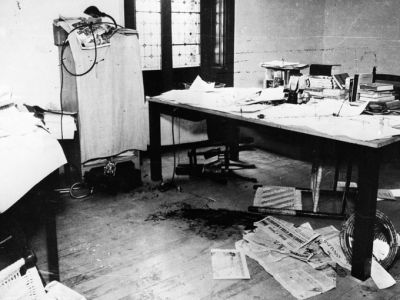 Police photograph of Trotsky's studyThere is no evidence whatsoever in the Trotsky archives at Harvard to support this claim. Having examined every single page of the original Stalin material, including the long strips pasted end to end, I can safely say that there is no evidence of blood stains or anything else that would support this fairy tale. No damage at all can be seen. The police photograph of Trotsky’s study following the assassination reveals some newspapers scattered on the floor following the struggle, but there is no sign of any “long strips of galleys proofs spattered with blood”. Clearly Charles Malamuth invented this story in order to dramatise the whole thing and thus boost his own role in “rescuing” Trotsky’s manuscript. This is not the only example of unscrupulous behaviour on his part.
Police photograph of Trotsky's studyThere is no evidence whatsoever in the Trotsky archives at Harvard to support this claim. Having examined every single page of the original Stalin material, including the long strips pasted end to end, I can safely say that there is no evidence of blood stains or anything else that would support this fairy tale. No damage at all can be seen. The police photograph of Trotsky’s study following the assassination reveals some newspapers scattered on the floor following the struggle, but there is no sign of any “long strips of galleys proofs spattered with blood”. Clearly Charles Malamuth invented this story in order to dramatise the whole thing and thus boost his own role in “rescuing” Trotsky’s manuscript. This is not the only example of unscrupulous behaviour on his part.
Following Trotsky’s death, the American publishers, who owned the rights to the book, placed Malamuth in charge, not only of the translation, but of “editing” the final book. For them, this was simply a commercial calculation to salvage the book following the author’s death. Trotsky’s views did not enter into their calculations.
Malamuth’s distortions
As soon as Malamuth had gained access to Trotsky’s unfinished manuscripts, he continued with his translation. It seems that the method Malamuth used was to verbally translate pages of Russian text to an English-language typist. This can be seen from the numerous misspellings of Russian names in the typewritten drafts. Malamuth then went over these first versions to polish up the translation.
From this point on Malamuth, now translator and editor of Trotsky’s Stalin, would decide what would go in and what would be left out of the book. He was also free to add his own commentaries as bridging material. “The editorial policy in regard to the unfinished portion of the manuscript was to publish Trotsky’s text entirely except for repetitious and utterly extraneous material”, states Malamuth in his editor’s note. “Under the circumstances, extensive interpolations by the editor were unavoidable”. In addition, eight pages of text were made up of “portions of the author’s notes [but] summarised by the editor”.
Malamuth used this position as editor to introduce his own political commentary into parts of the book, using extensive interpolations in brackets. These unauthorised additions served to distort and misrepresent Trotsky’s political standpoint and went against the entire political spirit of the book. They regarded Stalinism as the inevitable outgrowth of Bolshevism – a view that was in direct contradiction to the position held by Trotsky, which is clearly expressed in his biography of Stalin.
To illustrate the extent of these “interpolations”, it is sufficient to look at the original Chapter Eleven, "From Obscurity to the Triumvirate". Of the roughly 1,200 lines in this chapter, sixty-two percent are by Malamuth and thirty-eight percent are by Trotsky. There is not a single word of Trotsky until after seven-and-a-half pages by Malamuth. All this was passed off in the editor’s note as simply “commentary” essential for “fluency and clarity”!
This political meddling led to bitter exchanges between Malamuth and Natalia Sedova. After being shown the final proofs of the book, Natalia and Trotsky’s attorney, Albert Goldman, objected strenuously to the content. There is a whole section of letters in the Trotsky archive containing the objections raised by Natalia and Albert Goldman. Their indignation is revealed in their damning comments written on the page proofs: “False, completely false… Trotsky’s own and complete ending should be used. Not the ‘edited’ Life copy.” “Unacceptable Revision of history!” “Unacceptable”, “False revision of historical events.” And so on.
Trotsky’s widow’s objected to the “unheard-of violence committed by the translator on the author’s rights.” She went on to insist that “everything written by the pen of Mr. Malamuth must be expunged from the book.” “As a concession”, they wrote, “we could agree to include L.D.’s own text – provided it is first checked against the originals by us.” They then went on to cross out pages of commentary by Malamuth. But it was all to no avail, the unauthorised commentaries were all maintained in the published version. [Harvard, Folders bM3 Russ 13.3 – H12 (1of2)].
Natalia resorted to legal action to prevent publication, but the case was lost. When the book finally saw the light of day, Malamuth cynically announced the publication was taking place “without censorship either by Trotskyists or by Stalinists”! The publication of Stalin was originally planned for 1941. But while the book was in the process of being printed and distributed to wholesalers, the US government intervened to halt publication. Following Hitler’s invasion of the Soviet Union, Roosevelt did not wish to annoy his new ally – Joseph Stalin.
“It [Trotsky’s Stalin] was printed by its publisher, Harper and Brothers, but withdrawn by them prior to public sale late in 1941”, writes Frank C. Hanighen, feature writer for La Follette’s Progressive in the 1st May 1944 issue. “The publishers gave as the reason for withdrawal ‘a concern for the work’s adverse effect on international relations’ says Mrs Lombard…”
Mrs Helen Lombard, a Washington Evening Star journalist, exposed the book’s suppression.
“One member of Congress was asked not to let the book get out of his hands nor permit it to be examined by any other person … State Department officials have made informal suggestions that any quotation from the book would be harmful to Soviet-American relations…” explained Frank Hanighen. (Reprinted from the British Socialist Appeal, August 1944).
Only in 1946, after Britain and the United States had fallen out with Stalin, did the book finally appear. As expected, the publication of Stalin provoked outrage from the Stalinists. They had cheered the suppression of the book, which they hoped would be permanent. But the times had changed and the indignation of the Stalinists knew no bounds.
Five years after it had been withdrawn to avoid embarrassment to Stalin, it was now seen as a useful stick with which to beat him. And Malamuth’s insertions provided the necessary “adjustments” to turn Trotsky’s work into a weapon in the struggle not only against Stalinism but also against Bolshevism. For their part, Harpers were keen to make money from its delayed publication. The whole episode is characterised by the most blatant cynicism on all sides: the publishers, Malamuth and the US government all conspired to use and abuse this book for their own ends. The one voice that was silenced was that of the author, Leon Trotsky.
Malamuth’s omissions
When Stalin was finally published, a great amount of the material had been left out of the book, despite being translated by Malamuth who judged this material to be “superfluous”.
There was therefore clearly a great deal of work to be done in restoring as far as possible the original, although unfinished, text of Trotsky. The first task was to remove the political interpolations of Malamuth. In the archive, we again went through the text in order to identify the gaps and omissions. Fortunately, most of the missing material was numbered and could, with considerable detective work, be reunited with the original text to one degree or another.
On a visit to the archive in 2005, we purchased copies of the missing material in the form of microfilm. With assistance from Philip Wallace at the Trotsky collection at Glasgow Caledonian University, photocopies were produced from the film. Then these copies were meticulously typed up, including all the changes, comments and deletions.
This labour of love took a considerable amount of time. Once accomplished, we were then able to painstakingly piece together the original, but still unfinished, work and to slot together all the missing parts of the book. Any small gaps we missed initially were restored thanks to the help of Steve Iverson in Boston, who made visits to the archives on our behalf.
From the time we first obtained the necessary material to the moment we were ready to publish the new edition more than ten years has passed. We have had the benefit of a dedicated team of people who have sacrificed a great deal of their time and effort to ensure the success of this important project, none of whom were able to work on it full-time. The first task was to copy the missing material in a way that could be transferred to a computer, since the original was in too poor a state to be scanned. This onerous task took about two years and was carried out by Hazel Brookshaw, who struggled single-handedly to decipher and type up all the photocopies into useable word files.
The most complicated and time-consuming task was to find the most appropriate places to insert the new material. This actually involved completely reworking the text, work that proceeded painfully slowly. This was the task of Alan Woods who, using his political judgement and knowledge of Russian, managed to complete this important but extremely complicated and difficult work over a period of about three years. The task was further complicated by the discovery of new material, both in English and Russian. Other material, which did not fit, had to be placed in the most appropriate place and political context.
We would also like to thank Philip Wallace from Glasgow Caledonian Archive of the Trotskyist Tradition for his help in copying the microfilm. We must thank Hazel Brookshaw for typing up the photocopies and later proofreading the completed text. We also thank Ana Munoz for her efforts in typing up the corrections and proofreading. In addition, we wish to thank proofreaders Julian Sharpe, Sion Reynolds, Phil Sharpe and Henry Gray for proofreading. We must especially mention John Roberts for his valuable contribution of further proofreading, footnotes, suggestions and oversight. We would also like to thank Thomas Ford and the other librarians at Houghton Library, Harvard University, for their help and assistance. Thanks finally to Timur Dautov for his assistance in translations from Russian.
In publishing this book we have finally fulfilled the wishes of Trotsky’s widow, Natalia Sedova, to expunge all traces of Malamuth from the text. Trotsky’s critique of Stalin and Stalinism stands in its own right as a classic work of Marxism. We fervently hope that our decision to republish this important work by Trotsky, purged of the earlier distortions, will serve to restore Trotsky’s last work to the place of honour it deserves in the political literature of the 20th century.

